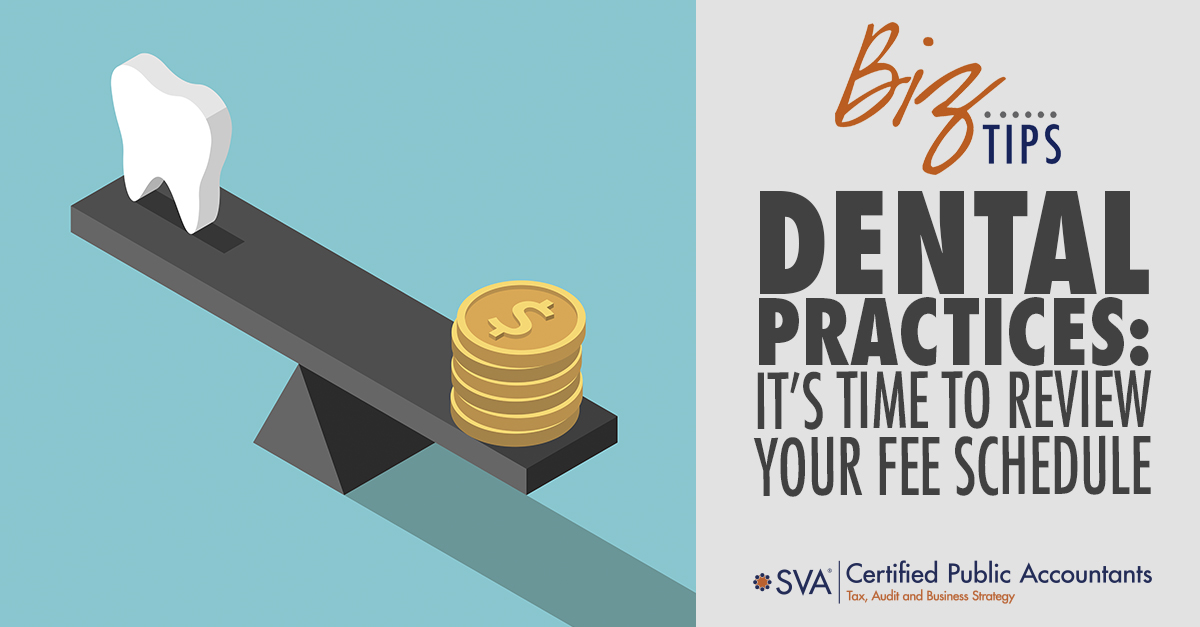One of the best exercises for any dental practice is to review and update its fee schedule regularly. This year, fee schedule reviews are more important than ever. Practices are facing pressure from increased PPE and staffing costs, flat or declining insurance reimbursements, and a struggle to make up lost production due to COVID-19.
Practices need to devote significant time to reviewing and updating their fee schedule.
Here are important steps to consider:
- Remove deleted dental procedures codes
- Add new dental procedure codes and set a fee
- Review dental procedure code revisions. If the scope of the procedure has changed enough to impact the fee, adjust the fee accordingly
- Review the other codes in your fee schedule. There are several factors to consider:
- Consider inflation and its impact on fees
- Consider increased PPE and staffing costs due to COVID-19. Build the increase in these expenses into your fees
- If possible, compare your fee schedule to fee surveys, ideally for your marketplace or specialty. Look for fees well below your market or specialty and adjust accordingly
Focus on Top Procedure Codes
Practices need to specifically review procedures that are most impacted by inflation and current events and consider fee increases on those codes. Practices need to devote most of their time to their top twenty codes.
These codes can produce as much as 80%-90% of a practice’s revenue. A flat percentage increase will not be appropriate for these codes and may not be enough to keep a practice’s fee schedule up to date.
Insurance Reimbursement
Some practice owners skip reviewing their fees because of the prevalence of dental insurance in their practice. They reason that since their reimbursement for any procedure is limited by their insurance contract, there is no benefit to updating their fee schedule. Updating your fee schedule is important no matter how many of your patients are covered by dental insurance.
Practices with a majority of patients with dental insurance may not see a reimbursement increase on patients with insurance coverage but there will be an increase in payments from patients without insurance. And practices with a large percentage of self-pay patients must update their fee schedule. Not increasing fees to keep up with rising costs is leaving revenue on the table.
Fee Negotiations with Insurance Providers
There are other important reasons to review and increase fees. Practices need to think ahead to their next fee negotiation with insurance providers:
- If the gap between submitted fees and allowable fees doesn’t change, neither will carrier reimbursement.
- If practices don’t raise fees simply because they are not anticipating increases from insurance carriers, submitted fees remain the same from the insurance company’s perspective and there is not pressure to implement any increase in maximum allowable fees.
Further, practices that don’t increase fees dilute average fees for a geographic area. Regular increases, that accurately reflect the practice’s cost of doing business, have the potential to impact carrier fee schedules across the board. The wider the gap between practice fees and allowable carrier fees, the stronger the argument for reimbursement increases.
Finally, a well-developed fee schedule demonstrates to patients the practice’s commitment to hiring and maintaining a highly trained and experienced staff and utilizing state-of-the-art methods to deliver care.
As you can see, updating your fee schedule for your dental practice is very important. If you have questions or need assistance in determining how your fees should change, please contact an SVA advisor today.

© 2021 SVA Certified Public Accountants

